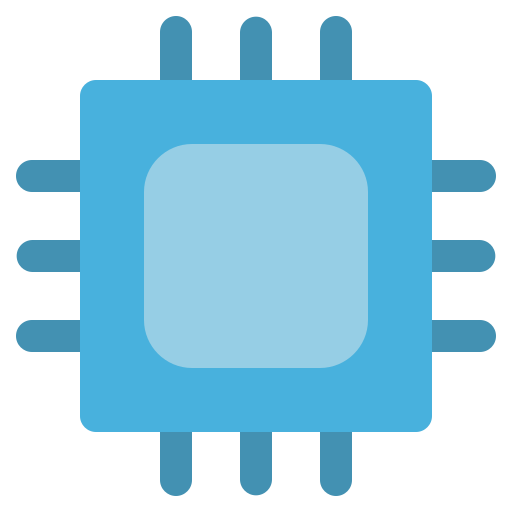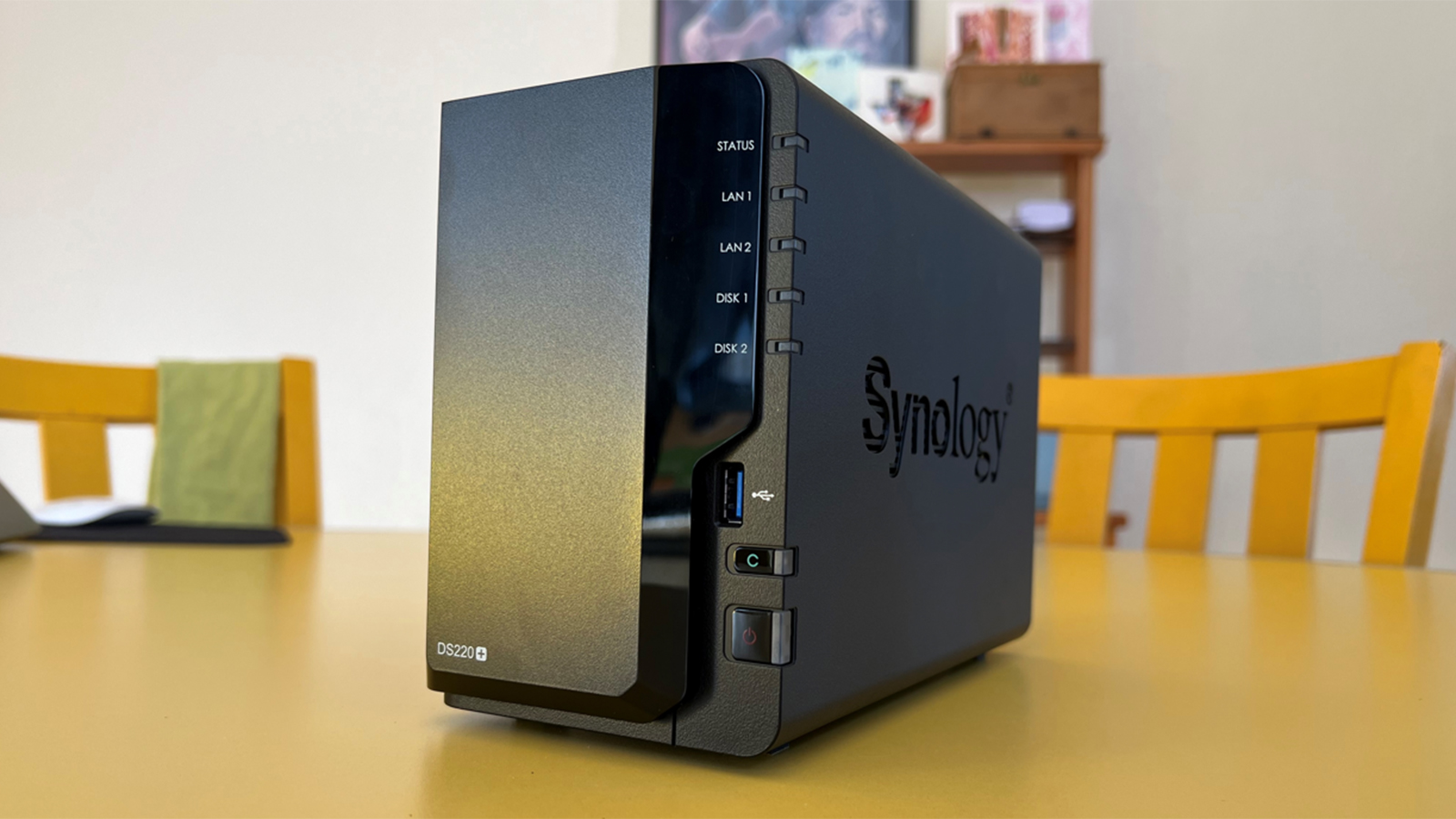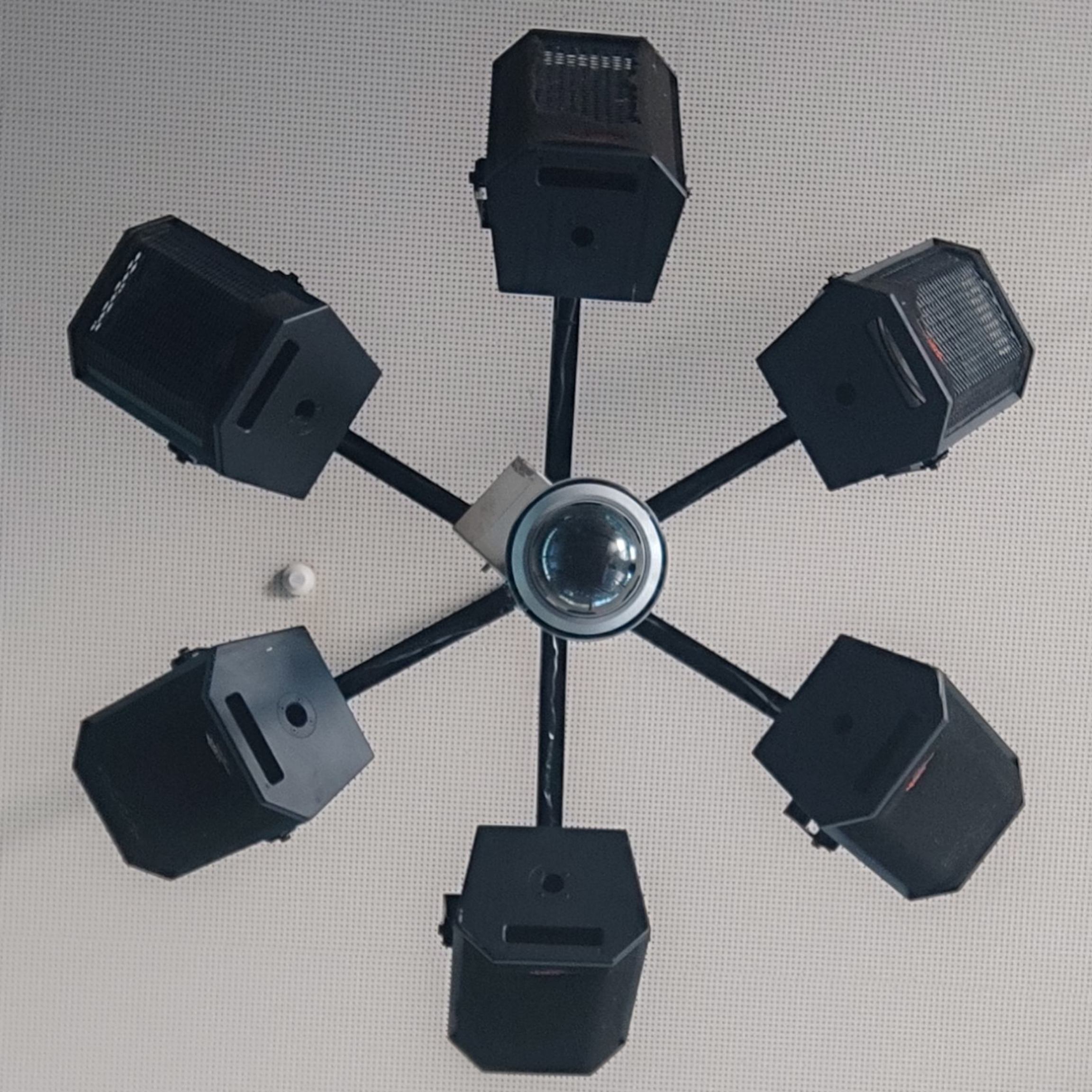To be clear, Synology branded drives are also third-party, but it’s just third party they make money on. They don’t actually make drives and there’s no real technically valid reason behind this move.
Turns out my next NAS will be a custom after all.
Looks like I’ll have to treat my current Synology like I treat my Brother printer. Reverently.
I bought a U-Nas case a while ago. Just a small NAS-style PC case with eight 3.5" disk bays. I built it up and played around with it, but never put it into service in my homelab. It just sat there (off) with Truenas or something on it for testing. Well, it was a good thing I never did anything with it as I needed it the day my Synology died last year. It was a DS1518+ on (a lot of) borrowed time having lasted nine years. I mentally toyed with buying a new NAS, but the idea of spending a few thousand dollars didn’t excite me (or the wife).
So, I loaded up Xpenology on a thumb drive and plugged it into my U-Nas. It did not take me long to see how easy this was to load up a Synology DSM and hit the ground running. Then, once I loaded all my disks in, it saw everything and asked if I wanted to upgrade the OS. Sure, why not?
So, all data intact and running a mostly generic set of hardware as a Synology only a couple of days later. Zero extra cost for me as I already had everything. But you can do this too with hardware you might have laying about. I highly recommend it.
DS1518+ on (a lot of) borrowed time having lasted nine years
DS416 nervously blinks in the corner
Don’t you dare.
I’m still running my DS1812+, she’s purring along with no signs of distress. 😅 I have another DS1515+ that I recently added and the difference in speed/responsiveness in the DSM OS is night and day. So the older DS1812+ is now mostly for long term storage.
DS213 … 😰
But why are the bays so expensive?! (A 6 bay is like almost six times a one bay)
Nice! I’ll keep this in mind!
Do you like the U-Nas? I had an 810a (I think thad was the model) and found it way too restrictive in terms of size.
The PCIE slot also needed a riser cable since the card has to be parallel with the motherboard, the cable blocked about 1/3 of the CPU fan. I had a pcie card since it was an HBA
That looks like the one I am using. I bought a tiny motherboard that had the newer Supermicro Optilink connections. This allowed for all eight bays to be used with smaller cables that helped airflow and it had one onboard M.2 slot that I am using as cache. I did also put the PCI-E ribbon cable in to use with a 10Gb card, but I should pull that out as it’s only using the 1Gb link where it sits.
I don’t recall where, but there was a whole buildout of this Unas case on some blog linked from reddit years ago and I just followed that except for changing the motherboard. The parts I swapped in did better on the build than the blog version. They had to trim things to make it all fit. I didn’t have to do anything like that. It just worked.
All in all, a very nice NAS package that has the same footprint as the Synology.
Yeah I really liked the case, in theory. And I’m really happy you like it. I did have to trim the case as well. I swapped out for a Fractal Design Node 804. Definitely bigger, but I like it a lot more
oh no what did brother do
Qnap has been pretty good so far.
Can confirm, love my QNAP NAS
Synology requires self-branded drives
I’ve started to categorize enshittification headlines by how many words it takes me to know I won’t be dealing with a company again (after reviewing the article for accuracy, of course). This one only took 5 words, and one is a compound. That’s pretty efficient.
deleted by creator
Removed by mod
Yo, you alright?
The enshitification will continue until revenues improve…
Glad I built my own OMV
OMV is great.
Very True, Though im utilizing a virtual machine as my go to NUC has bit the dust.
I had OMV running on an old Llano based system. I upgraded the system to Intel N100. I just put the drive in the new system and it booted with no issue (after network reset)
I’m not familiar with the term OMV, could u enlighten me?
I believe they’re referring to https://www.openmediavault.org/
I saw it early on when I started my homelab journey a few months ago, ended up going with proxmox instead though.
I was a little worried about the “user friendly” aspect as that usually implies it’s more limited.
Ohhh ofc, I should have gotten the abbreviation 😅 Thank you.
my bad - I should have linked. Thanks to /u/Jakeroxs@sh.itjust.works
I am indeed referring to openmediavault. Thanks.
That’s a shame. Building your own NAS it’s not that difficult and a valuable learning experience.
Have any handy non-video guides you would recommend on how to do so? I’m keen to learn this.
Any PC building guide, use a case with enough 3.5" bays and a mainboard with plenty of SATA and M.2 ports (if you want SSD csche).
After that it gets more specialized.
Get a fractal case, go to pcpartpicker for the rest… Get a gold PSU… Be sure to check on getting a motherboard-cpu combo that supports ECC RAM… Install a linux distro with proper support for zfs (e.g. I wouldn’t recommend Arch), perhaps TrueNAS Scale. Done :)
I’m using TrueNAS Scale right now on my second server (landfill bound, offered money for it, got it for free baby!) which was just some Dell computer from some older people who bought a brand new computer because this one was “not letting them install stuff”. The permissions, and the way things are explained for the settings/permissions, are AWFUL for someone who has just now dipped their toes into this OS.
TrueNAS Scale is great for what it is, but please be ready for some headaches if you’re fresh into the scene. I still recommend it for now.
Ha, mines an old Dell too. Not running Scale on mine though.
My NAS is a 10+ year old Dell XPS I had laying unused. ~16TB of storage in RAIDZ1 and I still have SATA ports free. Like you said though my limiting factor is space for 3.5HDD.
What do you buy for the chassis? Seems like that (with hot swappable drives and two color LEDs next to each) is the main reason you’d buy something like synology
Their low power compute hardware, very compact form factor, and OS/apps are the selling points.
There are both commercial and DIY alternatives, but I am not aware of any that really check all three boxes quite as well.
When my disk station eventually dies I’ll go the DIY route but that doesn’t mean I’ll be excited to do so.
I built my own nas back in the day and it is not worth it. trying to remember an the mdadm commands, setting up Cron jobs for scrubbing and smart tests, setting up email notifications if the tests fail, flashing the firmware on my hba, setting up dynamic DNS, fail2ban (later a private key whitelist), borg etc etc. it’s not too bad if you’re an experienced Linux user but it’s still a lot of time out of your day, meanwhile if you’re a new Linux user then you’re basically just playing russian roulette with your data. building a jellyfin server is a good learning experience but for a nas I would pick an off the shelf appliance every time
That’s a big fuck-up.
Hey maybe the Sonos app guy can help them out.
Will avoid. Thanks for the heads up.
Well I currently own a Synology NAS and it officially will be my last.
Yep same. I bought my 1522+ in 2023 and it should continue to meet all my needs long into the future. But when I finally decide to decommission it, it’ll be time to diy an unraid or freenas build
Yep, same, it’s even a 1522+! I had some concerns going in, but had a good prior experience with a 216j that someone gave me for free (I still rate the 216j as a small RAID1 box). I heard the spiel that the Synology DSM OS was worth it, but honestly it has shortcomings, uses old technology and is not very adaptable. Fine if you just want to plug and play, but next time I’m going back to Proxmox and will give TrueNAS a go.
Feeling real good about learning TrueNAS Scale now.
Any tips on dealing with ACL?
Oh, you mean my biggest problem?!
I’ve just resorted to using the shell to set permissions on stuff. For the most part everything works but I’ve had issues with NFS shares. I think some of that was copying from Windows and Windows trying to do things it shouldn’t but once I just manually set things up I was able to back all my stuff up.
VMs and apps run in their own little areas so they just happily hum along.
deleted by creator
You might want to actually reply to Cort because I’m not sure they’ll see this after a day and not replying to them.
Yes, I swear I clicked the reply button on THEIR comment, but you know how that goes. Lol
As the poster above stated, permissions and the way things are explained for those permissions or the settings in general are vague as fuck to someone who has just now dipped their toes into the OS. It’s a headache to learn, but once you get it setup (I recommend using Obsidian to keep some notes for your future self on how you set it up) it does relatively work absolutely fine.
Is there any thing in particular you need info on? I used Kagi Assistant during the moments where I didn’t fully understand why things were the way they were, i.e. “I want to use this like I use my Synology, what the hell is an ACL??”. I may be able to fumble you along like I did myself! :P
EDIT: I guess I could actually try to answer your question. What I did was create my own admin account and group and named them my name. After creating them, I logged into my newly made account (or tried to!) until I realized I didn’t have the same permissions as the TrueNAS_admin account, so I essentially copied those. I then logged in successfully this time, so I made sure I could do what I could do on the admin account. I could, so I then made sure the truenas_admin account was disabled. (or, I believe I did. I may not have, so look into that before you try it). Then I used Kagi Assistant to give me a general overview of what permissions my admin account should have so that I can always access whatever the hell I want on my own setup. I am at work right now, but I wrote down the list of groups that you would add to your Auxiliary Groups. Some that I do remember are: apps, libvert (and the other virt. These are needed for you to use the NAS as a VM, which I did want to try out since my Synology is way too under powered for any real VM tinkering) and whatever groups the truenas_admin account has. If you’d like the full list, I can try to remember to give it to you, but once I am home, I usually have too much going on for me to remember things.
After that, I am actually able to do mostly what I want for my own setup. I’m a single person using it all the time, so your mileage and needs will probably vary. :)
I think the biggest problem I’m having with it is making virtual machines that have access to my Nas, and containerized apps as well.
Trying to setup ersatz tv and give it access to my Plex library, but it can’t seem to access it.
The other thing I’d like to figure out is how to passthrough a GPU to a VM so I can output video, but that’s way beyond ACL issues
“third-party HDDs”
In my day we just called these… HDDs. Anytime something so ubiquitous has to be labeled third-party, you know who the bad guy is instantly.
Third party ram, third party motherboard, third party cmos battery…
They’ve been implementing this for a while with some of their models. There’s an excellent script that is actively maintained to get around their shit policies.
I’m only using a Synology (ds1823xs+) because I got a killer deal. (Sometimes I still wish I went with unraid.) I’ve never encountered any issues using unapproved hard drives with this script.
My man, I wouldn’t bet on Unraid not going the same route like Plex.
Ha! I bought a plex lifetime pass years ago while on sale. Maybe one day I’ll switch to jellyfin- maybe sooner than I think.
On a positive note synologys brtfs is pretty cool. If anything, it’s one less thing I don’t need to worry about.
I also bought a Plex pass years ago on sale and back then the app was fabulous, nowadays it is simply meh. I am still running it, but seriously considering switching to Jellyfin
Imagine making sure customers don’t buy your shit.
I don’t regret building my home server with Unraid at all. It’s great, use any drives, don’t even have to be the same sizes.
The pricing is reasonable, but one issue is that they changed their pricing scheme recently to only give a year of updates for all but the costliest license. I was grandfathered in unless I upgrade my license, but it’s something to consider.
I’m using Openmedievault and it works just fine. No need to spend money out put up with enshittification.
Interesting, I must have missed it when investigating. It seems a little “Linux power user”-y, though - is that accurate? It says for home office, but is it good for movies/music/etc hosting?
https://www.openmediavault.org/features.html
I can figure out how to get things done when I know the goal (I learned plenty of command-line, docker containers, etc setup with Unraid). So not a beginner. But to be honest, I can’t even understand if the features on this “features” page are things that are important to me because I don’t know enough acronyms and foundational knowledge, so it’s a little imposing.
Not OP but I use it as my nas for my jellyfin stack and run docker containers on it just like unraid. It is less plug and play than unraid. Specifically to mirror the unraid array on omv, but it can be done. I used this site a couple years ago, it appears to have been updated, but hopefully will help. https://perfectmediaserver.com/
It’s certainly not very user friendly in the initial setup. It took me quite a while to figure out how to set it up. But once that’s done, it works very well.
The nice thing about their new licensing model is the cost of lower tiers goes toward license upgrades, i.e. you can start with the cheapest license and if you ever need to upgrade you’re only paying the difference rather than buying a whole new license (assuming they don’t change it again before then.) Reduces the upfront cost a bit.
Oh, that’s definitely how it should be (but pretty much never is). That’s good to hear.
I’ve never used Synology NASes, but one feature that Synology NASes have that I found interesting and unusual was their ability to glue drives of different sizes together, what they called “hybrid RAID”. No single-drive point of failure, but permits for using drives of different size without wasting a ton of space.
While this isn’t, internally, all that technically complicated to do — internally, I understand that it’s just slicing the disks up into a bunch of Linux LVM logical volumes and merging those into an md device, keeping in mind where the logical volumes are located. You can build something like it on a Linux machine with LVM and md. However, it isn’t something that other NASes that I’ve seen provided.
Last I looked, Unraid couldn’t do it, and QNAP couldn’t do it.
Based on a quick search, it sounds like Unraid still can’t do that.
The thing I like about Unraid that’s dead simple, which I’m sure more technically-minded people can do with many solutions, is use drives of different sizes as long as each drive is less than the size of the parity drive(s). Since content shares are automatically distributed across drives, and those drives are different sizes, is that not very similar functionality?
I guess my question is, is the hybrid RAID solution above different only in that the array presents as a single drive to the user, rather than a single (multi-drive-apportioned) share?
tal, good to see you! I remember you for the “kagis real quick” comments you’ve left before! I actually started using Kagi because of you, and the assistant was a great help in getting my TrueNAS Scale setup, among many many other things. I actually love searching for things (most of the time) now! Thank you for enlightening me! :)
According to their site, the OS can only boot from a thumb drive. And if the drive fails you can only move the license to a new one once per year.
Why not allow it to boot from a small SSD or something?
I can’t say I understand the reasons for that.
But the flash drive content is very minimal and in 2+ years of using it, anecdotally I haven’t had any problems. The cache drive is separate (I use an SSD for that in addition to my 3.5" HDDs), and once booted my understanding is the entire OS is in memory, so it isn’t a bottleneck. The OS flash drive is small and just settings, and one-click backup, so I don’t have anxiety over data loss.
Synology’s new Plus Series NAS
This isn’t surprising. SOHO and middle tier business hardware installs have all kinds of these requirements from support vendors. Synology was sort of an outlier on those that just allowed mixed bag and it provide software calculations on hard drive health.
That they want knowns in their machines isn’t surprising. I’m actually surprised it isn’t a complete drop in any assurances if you BYOD.
These features in this product aren’t home or consumer grade and indicating that it’s for the “advance home user” is like saying Arch Linux is the advance MacOS. There’s a lot of detail behind that statement that’s not being addressed.
It is sad to see them go this route, but I cannot say it comes as a surprise. But honestly, if you’re a hobbyist and see yourself using the features in this level of NAS, you’re likely skilled enough as is to build your own. And honestly, you’ll be happier building your own.
I wish your comment was at the top
buying brand name is almost always a bad idea when it comes to computers.
take advantage of their modularity, people. desktops are still popular for a reason.
















